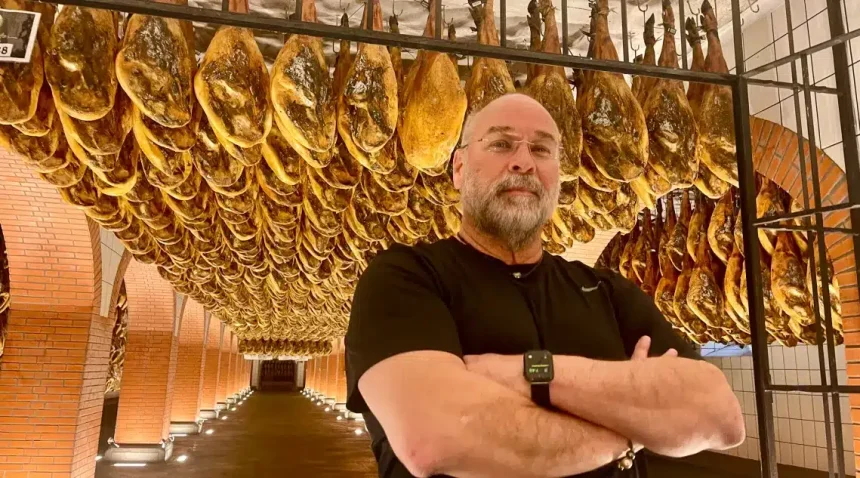Travel is situational. I could almost end this column with that first sentence. That sums up everything I am about to cover in the next 1,000 words or so. But let’s have some fun and flesh out that three-word opening.
I’ve written countless times over the past 12 years about the long, six-month trip my family and I made in Europe years ago. I hesitate to dive back into that oft-told tale, but it’s key to what follows, so here’s the condensed version for those who may not know. In 2011, my wife, 14-year-old daughter, and 10-year-old son flew to Sweden, bought a Volvo, and spent the next six months traveling to 72 cities in 17 countries on two continents. It was the greatest gift I ever could have ever given to my family. Spending that time with them was the greatest gift I have received. It was so monumental that all things in the life of our family are measured “Before the trip,” and “After the trip.”
Enough of the setup.
During that original trip everyone discovered places that became their favorites. When we left a country I would ask the kids, “OK, what was your favorite city?” A lot of time on the trip was spent discussing favorites. “What was your favorite piece of art in that museum?” “What was your favorite meal?” “What was the favorite dish you ate at that meal?” We all had favorites. I still have favorites— favorite countries, favorite cities, favorite restaurants, hotels, sights, activities, and dishes. But, again, it’s all situational.
One city I may have loved 12 years ago might have slipped a little on the list on subsequent visits due to new things I discovered in a city that wasn’t near the top of the list or challenging things that might have happened in a city that used to occupy a spot near the top. It’s fluid.
That original trip is why I am here today. People started asking to be taken overseas to see things we discovered, and I hosted a group. I thought it would be a one-off, but here I am several years and hundreds of guests later tracing the same route my family took 13 years ago— Madrid, Barcelona, Valencia, Seville, and Malaga. There were several other cities in the north— Segovia and Bilbao among them— we visited back then, but I only have 10 days with these guests, and we must focus on the lower three quarters of the country.
Years ago, if one had asked me to name my favorite Spanish city I would have quickly replied, “Barcelona,” with Malaga and Madrid not too far behind. But remember travel is situational. If I were to be asked that same question today, I might be hard pressed to name a leader. At best, I would probably rank Malaga and Seville as 1a and 1b.
So, what has changed?
In my eyes nothing has changed in Madrid or Barcelona. I love both of those cities. They each have distinct energies and hundreds of positive aspects that would force me to rank them above many other European municipalities. My favorite tapas bar on the planet— Tapeo— is in Barcelona. It’s not necessarily what has changed in those cities, rather what I’ve discovered and experienced in other places.
Seville has been ranked a comfortable third place in my book for over a decade. My past two visits here have been game changers. There’s a Saturday night energy in this city that is infectious. Madrid and Barcelona each have distinct energies, but there is something here in Seville that I haven’t been able to quite put my finger on yet. Though it’s grabbed ahold of me and taken root.
The roots are obviously bitter orange roots as there is nowhere one can walk in the Seville city center that doesn’t smell like orange blossoms this time of year. Beautiful.
Possibly what sways this area in current favor is that it is ground zero for Jamon Iberico, Europe’s finest— and the world’s most expensive— ham. On my first visit my son and I traveled north to Jabugo, a small town of around 2,000 people, in an area that is almost solely dedicated to Jamon Iberico production. One premium black label ham can cost up to 500 euros over here and up to $1,500.00 back in the States.
The black Iberico pigs from which Jamon Iberico comes live on a special diet of grains early in their lives and spend the next two years free grazing on grass, chestnuts, roots, and herbs. In the final stages of their life, they feed exclusively on acorns from under cork trees and a couple of other indigenous oaks. The acorn season is long here— October through March. After the salting and aging process, the hams are cured for over two years and the result is unlike any other pork primal in the world.
At Restaurante Las Bellotas in Jabugo, I have twice eaten the finest cut of pork in my 61 years of consuming all manner of swine. It’s not a paper-thin slice of Jamon Iberico, but the presa (a cut beneath the tenderloin and behind the shoulder. Most black Iberian pigs are raised for the hams. But all parts are used over here and so there are always plenty of chops, tenderloins, bellies, and other cuts that have also been grazing on acorns. A presa cut of pork, left in the hands of a Spaniard who knows how to roast it properly is a savory and buttery thing of beauty. Some say it tastes like steak. I say it tastes better than steak. It’s a rare crown jewel in the culinary world.
When it comes to food, I would likely rank Spain a third behind Italy and France— also 1a, 1b situations— but that’s some of the toughest competition in the world. My love for the Tuscan region has not been subject to situational bias. It remains, from the day I set foot in Tuscany, number one in my heart. Though I will take Jamon Iberico over prosciutto every day of the week. That goes for cuts of pork from Iberian black pigs.
Travel is situational. It’s also subjective. One of these days I’d love to write a three-word, one-sentence column, and I might. But these days I’ve got too much to share.
Onward.
Pork Loin with Prunes
1 each – Center cut pork loin roast (about 4 lbs.)
2 each – 7 oz. bags dried pitted prunes, rough chopped
1 TB + ¼ tsp – Kosher salt
1 tsp – Fresh ground black pepper
¼ cup – Extra virgin olive oil
2 cups – Red onion, small diced
¼ cup – Dry white wine
2 cups – Chicken stock
1 cup – Cognac or Brandy
Preheat oven to 350.
Using a paring knife, cut a slit in the top of the pork loin about 2” in length into the center of the loin, about every 2”. Using 1 bag of the prunes, fill each slit with an equal amount of prunes until they are gone. Season the outside of the pork loin with 1 TB of the salt and the black pepper.
Heat the oil in a roasting pan over medium-high heat. Brown on all sides and set aside. In the same pan, sauté the onions until tender, about 3-4 minutes. Deglaze with the wine and reduce by half. Add the stock and return the pork loin to the pan. Place in the oven until the pork reaches an internal temperature of 145-155, about an hour. Reserve 1 cup of the braising liquid. Transfer the pork to a cutting board and let rest at least 10 minutes before slicing.
While the pork is resting, combine the other bag of prunes with the cognac/brandy in a small sauce pot over high heat. Reduce the liquor until it has almost completely evaporated. Add the reserved cooking liquid and the remainder of the salt and reduce by half.
Once the pork loin has rested, slice into 1/4“ to 1/2“ thick slices, and top with the prune reduction.
The views expressed by contributors are their own and not the views of SuperTalk Mississippi Media.








